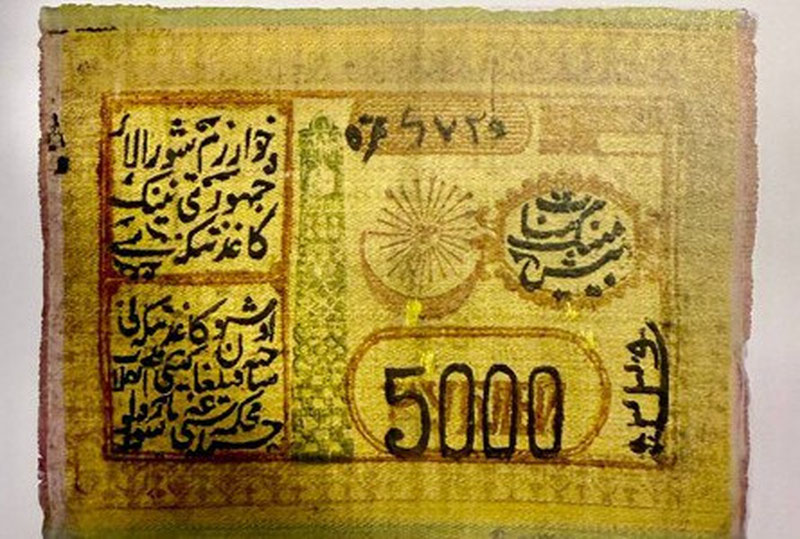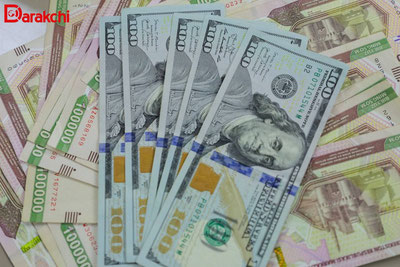Among historical documents, there are certain exhibits that are valued not only as a means of economic exchange but also as a great document encompassing the political, cultural, and aesthetic views of its time. One of these is a silk banknote with a denomination of 5000 Manat, published by the Khorezm People's Soviet Republic in 1920, which today is considered one of the most important and rare exhibits in the collection of the National Museum of the Republic of Tatarstan.
The banknote contains the following:
"This paper coin is provided with the emblem of the government's money. The paper coin of the Khorezm Soviet Republic. The person who counterfeits this coin shall be handed over to the revolutionary court".
This note entered the museum collection in 1982 through the collection of G.M. Dobrosmyslov, significantly enriching the museum's collection of notes. This collection included paper and silk money from Khiva and Khorezm, adding to the museum. These monies are important not only as a medium of exchange but also as documentary sources of political events, economic processes, and cultural life in Central Asia during 1918–1922. The note is made of silk fabric; its size is 102 × 148 mm. It uses iridescent, sky blue, and blue silks. Texts and images are printed in red, green, blue, and black inks. This delicacy and colorfulness make the note one of the most original and aesthetically beautiful currencies in the world.
Another distinctive feature of this note is that the inscriptions are in calligraphic style. The information such as the denomination and date of issuance is written in Uzbek language (in Arabic and Cyrillic alphabets), as well as in Russian in fine and varied fonts. They are placed within special ornamental arches and cartouches, enriched with elements typical of Muslim ornamental art. The images include various forms of Islamic architecture, such as madrasas and mosques.
Such silk banknotes issued by the Khorezm People's Soviet Republic in 1920–1921 served not only as a medium of economic circulation but also as a cultural document reflecting the spiritual face, art, and national identity of the people.
This note is a bright example of the economic order, cultural thought, and aesthetic ideals of the Islamic world, inviting museum visitors on a journey through the pages of history.
In the picture: A 5000 Manat silk banknote published by the Khorezm People's Soviet Republic in 1920. It is currently preserved in the collection of the National Museum of the Republic of Tatarstan.






